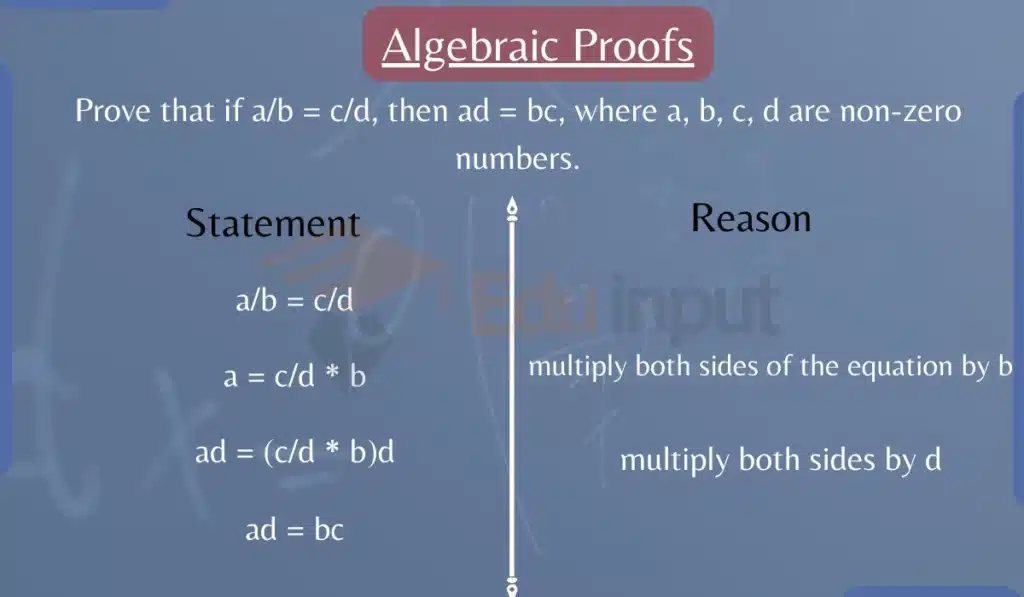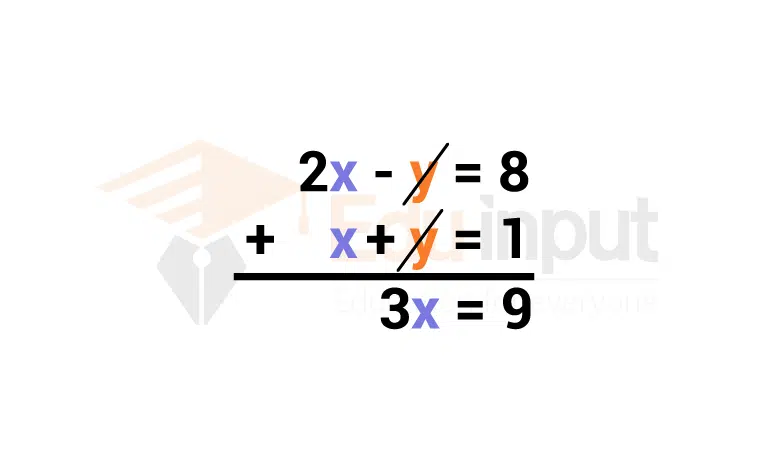Introduction to Algebraic Proofs
Algebraic proofs are like using algebra to show that something is true. They help us check if the math rules and statements in algebra are correct. So, they’re a big part of algebra, making sure we’re doing math right.
In this article, we will discuss introduction to algebraic proofs by covering some key concepts and strategies.
Basic Principles of Algebraic Proofs
There are a few core principles that form the foundation of algebraic proofs:
- Start with known facts, definitions, axioms, or previously proven theorems. These are statements accepted as true, and can be used as the basis for making logical deductions.
- Apply rules of logic. Use standard methods of logical reasoning like induction, contradiction, contraposition, etc.
- Follow step-by-step derivations. Show your work and lay out each step in the proof clearly.
- End with the statement you set out to prove. This is your conclusion, which should follow logically from the previous steps.
Rules of Division
Rules of division that are useful in algebraic proofs:
- Dividing both sides of an equation by the same non-zero number is valid. The resulting equation remains true.
- Dividing by a variable is permitted as long as you account for the possibility that the variable may equal 0.
- When dividing polynomials, you can only divide by a factor or monomial that divides evenly into the first term.
- The remainder theorem states that the remainder left over after dividing a polynomial by (x – a) is equal to the value of the polynomial evaluated at x = a.
Solved Examples
Example
Prove that if a/b = c/d, then ad = bc, where a, b, c, d are non-zero numbers.
Solution
Proof:
a/b = c/d
a = c/d * b (multiply both sides of the equation by b)
ad = (c/d * b)d (multiply both sides by d)
ad = bc

Example
Prove that x2– 4 is divisible by (x+2).
Solution
Proof:
Let f(x) = x2 – 4
Substitute x = -2 into f(x):
f(-2) = (-2)2 – 4 = 4 – 4 = 0
Since f(-2) = 0, by the remainder theorem, x2 – 4 is divisible by (x+2).
Therefore, the statement is proven true.
FAQs
What are some common strategies for constructing algebraic proofs?
Induction, contradiction, contraposition, direct proof using axioms/theorems, examining cases, using mappings, division algorithms, and factoring polynomials are some common strategies.
When do we need to start a proof with given facts or previously proven statements?
When proving purely algebraic statements, you can begin simply by writing the statement you want to prove. However, if you are proving a theorem relying on geometrical concepts or results from other branches of math, you would need to start by establishing relevant facts, axioms, definitions or previously proven theorems.
Is mathematical induction applicable to algebraic proofs?
Yes, mathematical induction is an important technique used to prove many algebraic theorems and properties, especially those involving sequences, divisibility, and binomial coefficients.
How can I get better at constructing algebraic proofs?
Practice! Try proving simple algebraic statements using different strategies. Work through examples from textbooks and review proofs of key theorems to become familiar with the structure and reasoning involved.





Leave a Reply